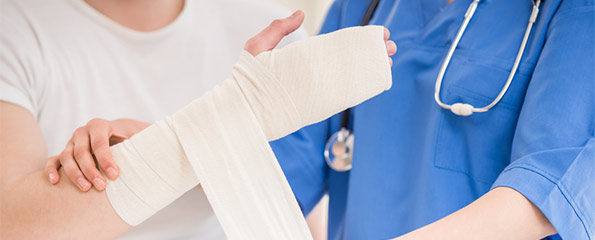How assessing broken ships can help assess broken bones
The way we assess healing of fractured bones is being revolutionised by a global, Monash University-led research team working on a United States Navy-funded project.
This pioneering, multi-disciplinary research, involving biomechanical engineering and clinical orthopaedics, aims to provide more accurate insight into the progress of healing bones than through current methods, offering improved rehabilitation for wounded personnel.
Professor Wing Kong Chiu from the Department of Mechanical and Aerospace Engineering at Monash University is internationally recognised for his work in structural health monitoring (SHM). He has applied SHM techniques to detect defects such as cracks in ships and aircraft structures. He undertakes this monitoring process using sensors, which requires an understanding of the physics of each structure and how they interact with external forces.
“Where previously we were looking for defects, now that we are working with fractured bones, we’re looking for the opposite – a complete union.” Professor Chiu said.
Professor Chiu’s multi-disciplinary research team includes Dr Matthias Russ, an internationally recognised orthopaedic, hip and pelvis surgeon based at The Alfred hospital, Melbourne; Professor Mark Fitzgerald, Director of the National Trauma Research Institute and Trauma Services at The Alfred; and Dr Wern Hann Ong from Monash University, who completed his PhD in structural health monitoring of aircraft structures.
The research has specifically focussed on fixated fractures – those which have been fitted with a metallic device to provide support and stability during the healing process.
Funded by the Office of Naval Research (ONR) Global, a funding arm of the United States Navy, the project began with looking at the load distribution on a fixated fractured pelvis when subjected to a normal gait.
Professor Chiu determined that attaching sensors to the fixation would be the way to assess the degree of healing of the fractured bone. An understanding of the degree of healing can enable earlier movement, such as walking.
“This is innovative multi-disciplinary research; using structural health monitoring for physiological applications”, commented Dr. Liming Salvino, Associate Director of ONR Global.
Dr Russ explained how this new assessment method offers improved outcomes compared with existing methods.
“The ability to monitor bone healing directly is crucial for accurately predicting outcomes and early function. At the moment, we rely on indirect measures such as CT and x-rays, which provide less reliable information about the progress of bone healing,” Dr Russ said.
Professor Fitzgerald explained how this ground-breaking research will contribute to health improvement in wounded military personnel.
“Regaining functional independence after major, life-threatening injury is now the primary goal in trauma care,” Professor Fitzgerald said.
“Merging biomechanical engineering with orthopaedic clinical trauma care will provide us with the means to achieve this.”
The benefits of structural health monitoring of fixated fractured bones were clear to the Warfighter Performance Department, ONR Code34, who have incorporated the research of Professor Chiu’s team into a new project supported under the ‘Leap Ahead’ Innovations Program for swift development of innovative technologies.
“The goal is to utilise advanced sensors and SHM technologies to improve injury treatment, combat casualty care, and enhance personnel protection and performance for Navy and Marine Corps warfighters,” said Dr Timothy Bentley, Force Health Protection Deputy and Program Officer of ONR Code 34.
Monash University’s Professor Abid Khan, Deputy Vice-Chancellor and Vice-President (Global Engagement) acknowledged the US ONR’s support and recognition of this multi-disciplinary research project:
“We are grateful for the US ONR’s recognition and endorsement of this Monash-led, multi-disciplinary research project. This international partnership and collaboration has the potential to deliver a real and positive impact on patient care,” Professor Khan said.
(Source: Monash University)
Dates
Tags
Created by:

 Login
Login














